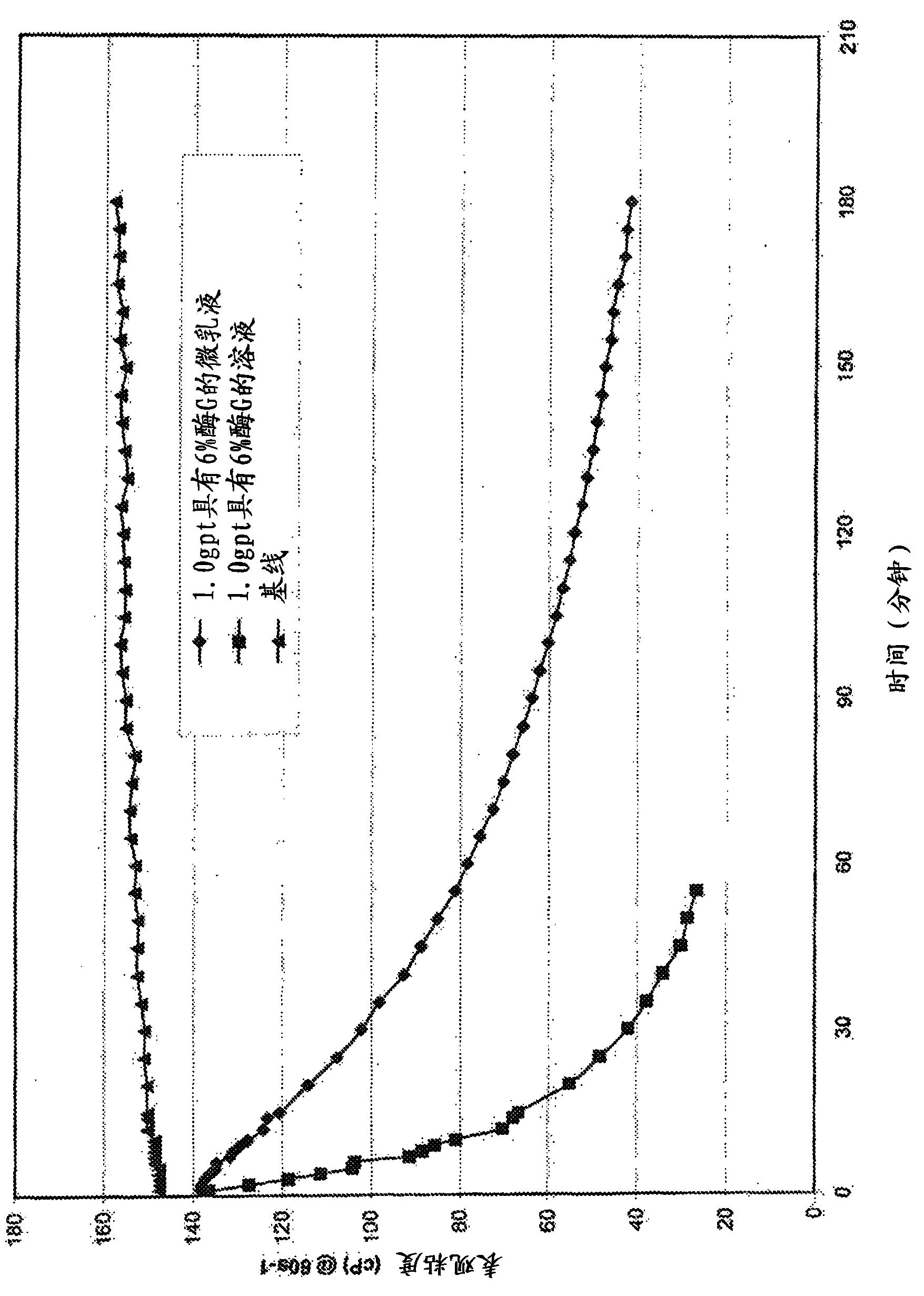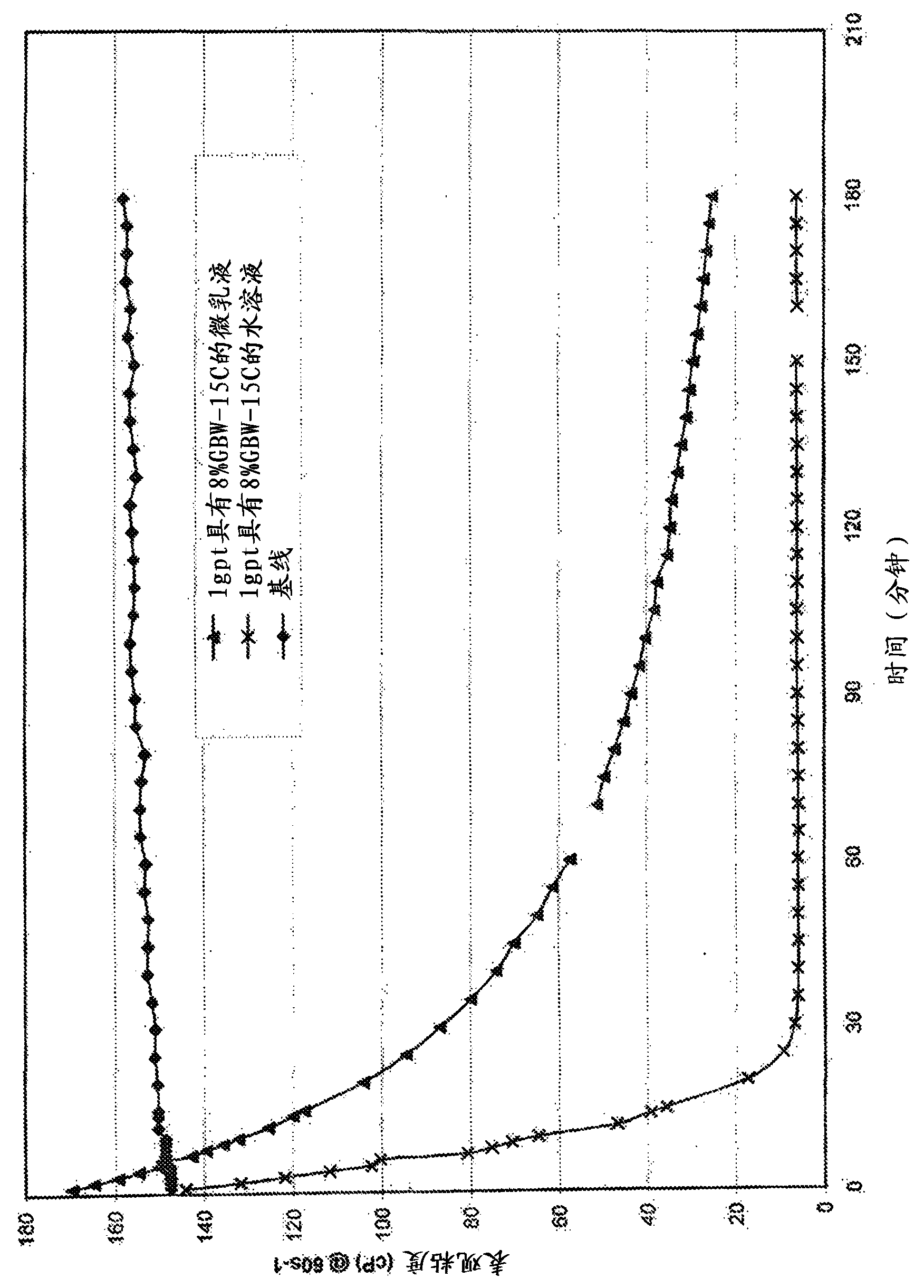Method of inhibiting or controlling release of well treatment agent
A technology for well treatment and fluid treatment, which is applied in the field of inhibiting or controlling the release of well treatment agents, and can solve problems such as clogging well pipes, reducing well productivity, and reducing formation permeability
- Summary
- Abstract
- Description
- Claims
- Application Information
AI Technical Summary
Problems solved by technology
Method used
Image
Examples
Embodiment 1
[0083] Example 1. The release rate of a water-in-oil microemulsion containing β-mannanase (commercially available as GBW-12CD from Baker Hughes Incorporated) was compared to an aqueous fluid; Breaker (commercially available from Baker Hughes Incorporated) and hemicellulase (commercially available from Baker Hughes Incorporated as enzyme GBW-15C) in guar-based fluids containing the same enzyme. The test was performed at the same temperature using the same concentration to demonstrate the effect of the well treatment agent in a water-in-oil microemulsion compared to the well treatment agent in an aqueous fluid. The oil phase of the microemulsion was composed of about 56% by volume of a surfactant mixture of polyoxyethylene sorbitan monopalmitate and ethoxylated castor oil and about 34% by volume of d-limonene. The microemulsion contained 6% Enzyme G, 8% Enzyme GBW-15C. An aqueous solution containing 6% Enzyme G and 8% Enzyme GBW-15C was also prepared.
[0084] A linear gel w...
PUM
| Property | Measurement | Unit |
|---|---|---|
| particle diameter | aaaaa | aaaaa |
| radius | aaaaa | aaaaa |
| particle diameter | aaaaa | aaaaa |
Abstract
Description
Claims
Application Information
 Login to View More
Login to View More - R&D
- Intellectual Property
- Life Sciences
- Materials
- Tech Scout
- Unparalleled Data Quality
- Higher Quality Content
- 60% Fewer Hallucinations
Browse by: Latest US Patents, China's latest patents, Technical Efficacy Thesaurus, Application Domain, Technology Topic, Popular Technical Reports.
© 2025 PatSnap. All rights reserved.Legal|Privacy policy|Modern Slavery Act Transparency Statement|Sitemap|About US| Contact US: help@patsnap.com



